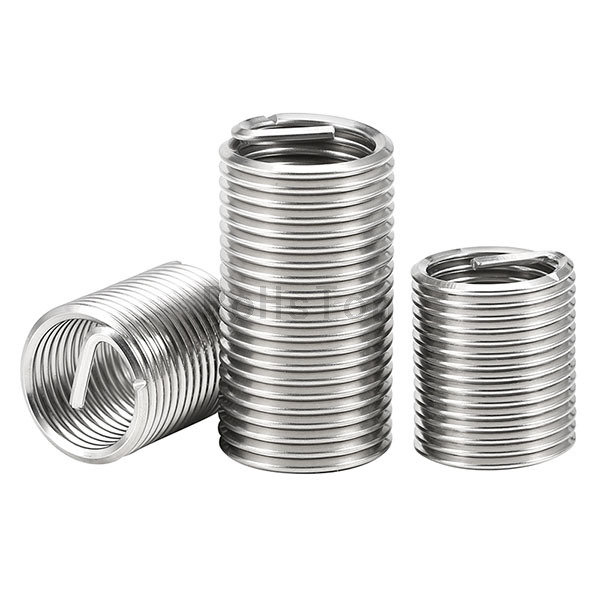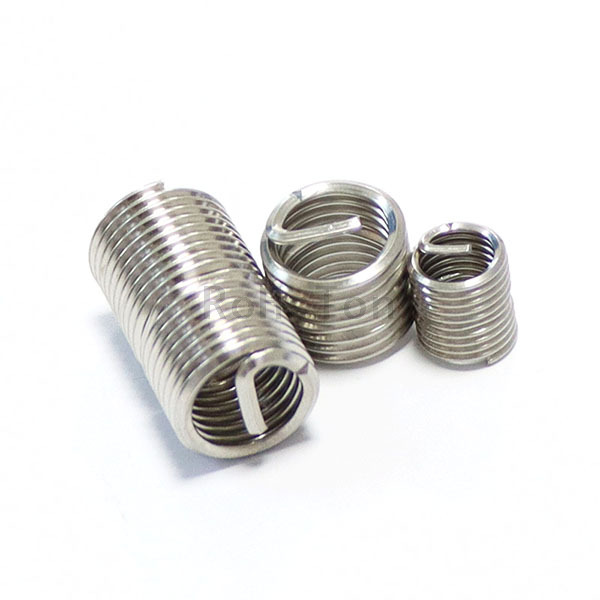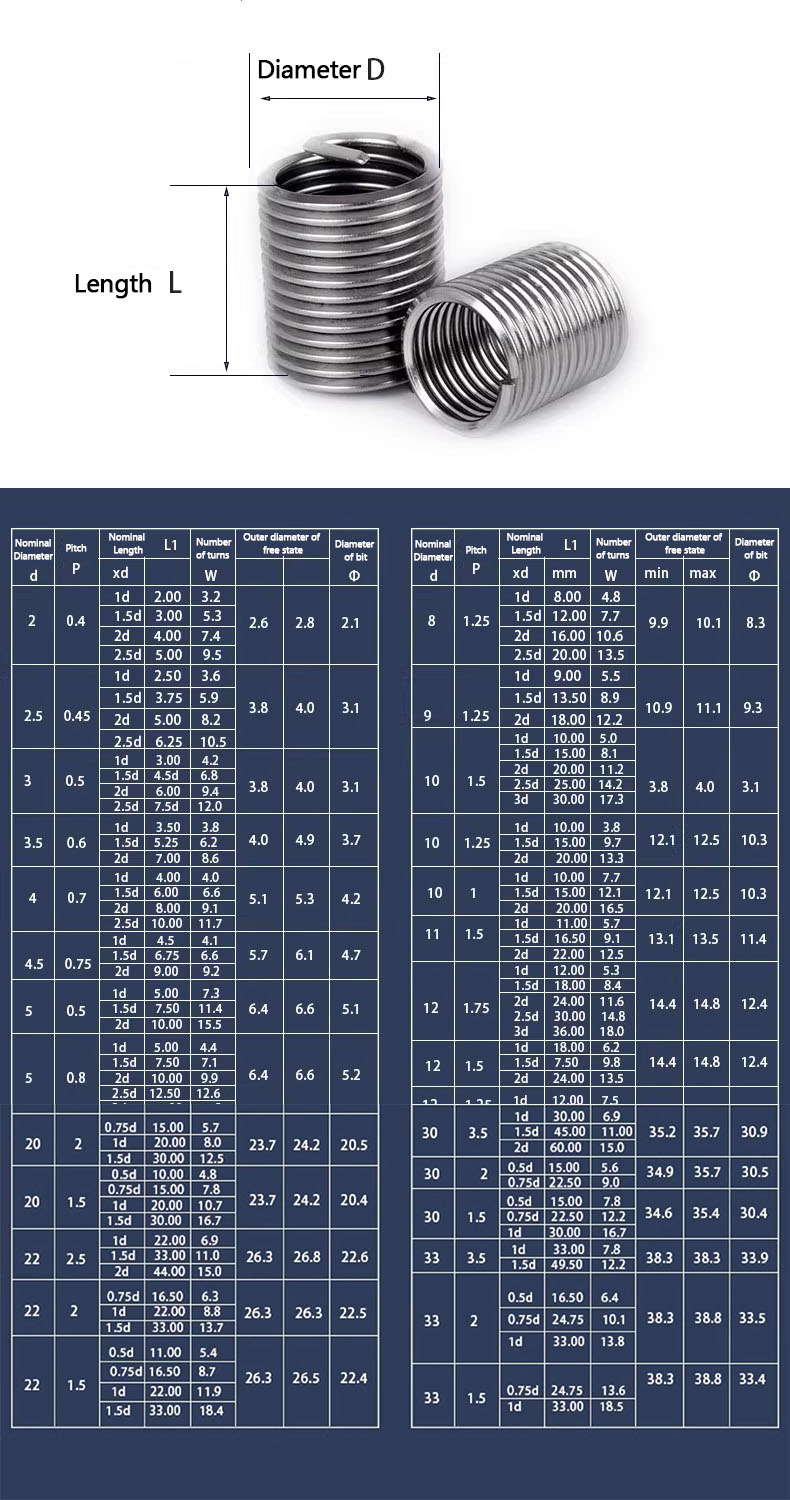Wire thread inserts, commonly known by the brand name Helicoil®, are ingenious helical coils made from diamond-shaped wire. They serve as durable, high-strength threads installed into tapped holes in softer or weaker base materials (like aluminum, magnesium, plastics, or even worn-out steel). Their primary purposes are:
Thread Repair: To restore damaged threads to their original size and strength.
Thread Reinforcement: To significantly increase the strength, wear resistance, and fatigue life of threads in soft materials.
Dimensional Conversion: To provide a standard internal thread size when a hole has been drilled and tapped oversize.
Classification: Free Running vs. Screw Locking
The two fundamental categories based on their functional design are:
Free Running Inserts (Type FR / Standard Inserts):
Function: Provide a standard, smooth internal thread. The mating screw threads freely in and out without any inherent locking action. They rely on the screw's own locking features (like prevailing torque nuts, washers, adhesives) or proper torque if locking is required.
Purpose: Primarily for thread repair and reinforcement where vibration resistance isn't the primary concern, or where separate locking methods will be used.

Screw Locking Inserts (Type SL / Self-Locking Inserts):
Function: Incorporate a specific deformed section in the coil (usually near the top) designed to create friction and interference with the threads of the mating screw. This generates a prevailing torque (resistance during installation) and provides a positive mechanical lock against vibration loosening.
Purpose: Used when the application involves significant vibration, thermal cycling, or dynamic loads where preventing screw loosening is critical. They eliminate the need for separate locking devices in many cases.

Appearance & Structural Features
Common Features:
Helical Shape: Both types are wound coils.
Diamond-Shaped Wire Cross-Section: This provides excellent strength and distributes load efficiently over a larger area in the base material.
Tang: A small protruding tab at the installation end used by the inserter tool to drive the coil into the hole. This tang is broken off after installation (using a punch tool) for both types.
Lead-in: A chamfered or rounded starting thread for easier screw insertion.
Key Difference:
Free Running: The coil is uniform along its entire length. The internal diameter is consistent.
Screw Locking: Features a deliberately distorted section in one or more coils. This appears as a slight bend or kink protruding slightly into the thread path. This is the locking feature. The rest of the coil resembles a free-running insert.

Common Sizes & Specifications
Wire thread inserts are manufactured for virtually all standard thread types and sizes:
Thread Standards: Metric (M), Unified National Coarse (UNC), Unified National Fine (UNF), British Standard Whitworth (BSW), British Standard Fine (BSF), etc.
Common Metric Sizes: M3, M4, M5, M6, M8, M10, M12 are extremely prevalent.
Common Imperial Sizes: 4-40, 6-32, 8-32, 10-32, 1/4-20, 5/16-18, 3/8-16 are widely used.
Specification: Size is defined by the nominal screw thread it accepts (e.g., M6x1.0 FR, 1/4-28 SL) and its length (number of wire diameters, e.g., 1D, 1.5D, 2D, 3D).

Common Materials
Material choice depends on the base material, required strength, corrosion resistance, and temperature:
Stainless Steel (AISI 304 / 18-8, AISI 316): Most common, offering excellent corrosion resistance and good strength. (304 general purpose, 316 for marine/chemical).
Phosphor Bronze: Used for excellent corrosion resistance, non-sparking properties, good fatigue life, and compatibility with steel screws in aluminum (reduces galvanic corrosion risk). Softer than stainless.
Carbon Steel: Less common, sometimes plated (e.g., zinc, cadmium) for corrosion protection where cost is critical and stainless isn't required. Lower corrosion resistance.
High-Temperature Alloys (e.g., Inconel): For extreme temperature applications (e.g., aerospace, engines).
Installation Method (Key Steps)
Proper installation is critical for performance. The process is similar for both types, but requires the
correct tools for each:
Drill: Drill the hole to the specified oversize diameter for the insert.
Tap: Tap the hole using the special, oversized tap designed specifically for the thread insert size/type. Use cutting fluid.
Clean: Thoroughly clean the tapped hole of all metal chips and debris (compressed air, brush, vacuum).
Install Insert:
Free Running: Screw the insert onto the standard mandrel of the installation tool until it seats snugly against the handle/tool stop. Insert the coil into the tapped hole and turn the tool clockwise until the coil is fully seated (usually 1/2 turn below the surface). Do not overtighten.
Screw Locking: Screw the insert onto the special locking insert mandrel (which has a flattened section matching the locking coil). Insert into the hole and turn clockwise until fully seated (1/2 turn below surface). The tool prevents damage to the locking feature during installation. Crucial to use the correct SL tool.
Break Tang: Insert the tang break-off punch (supplied with the tool kit) through the insert's bore. Strike it sharply with a hammer to shear off the tang. Ensure the tang is completely removed.
Check: Verify the screw threads correctly into the installed insert.

Application Scenarios
Summary of Key Differences
| Feature | Free Running Insert (FR) | Screw Locking Insert (SL) |
| Locking | No inherent locking | Yes, mechanical friction/interference |
| Torque | Consistent running torque | Higher prevailing torque on screw install |
| Vibration | Relies on external locking | Excellent resistance to vibration loosening |
| Install Tool | Standard mandrel | Special mandrel (prevents damage) |
| Cost | Generally lower | Higher (due to feature & tooling) |
| Structure | Uniform coil diameter | Deformed locking section |
| Primary Use | Repair, Reinforcement | Vibration-critical locking |
In essence, choose a free-running insert when you need a strong, durable thread for repair or reinforcement, and locking will be handled separately or isn't critical. Choose a screw-locking insert when preventing the screw from vibrating loose under demanding conditions is paramount. Always ensure you use the correct installation tools and procedures for the specific insert type.

















